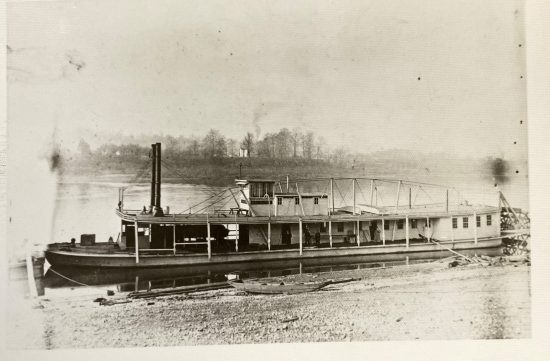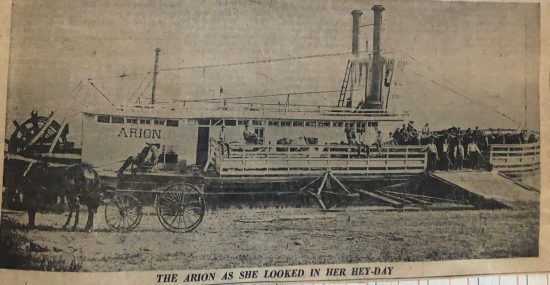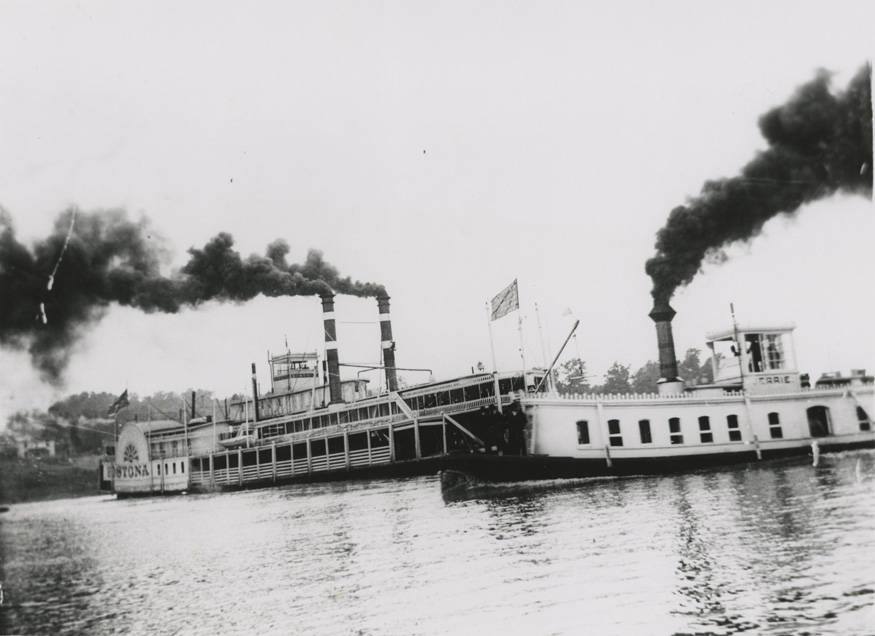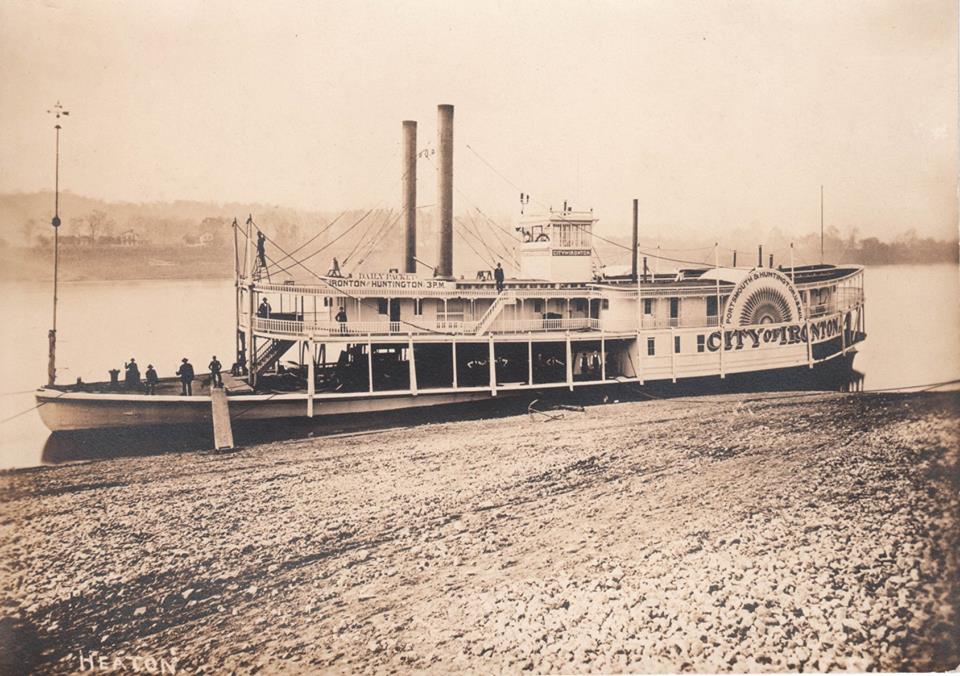Ironton Register, Thursday, May 28, 1857
In the Fall of 1849, we first came to Ironton, then just laid out, and in a few days had ________ to go down to Pine Creek. We went on board a sort of half-cabined sort of a ___________ steamboat, which was true, “somewhat bigger than a yawl,” called the Resort. A ________-looking fellow with a fur cap on sat with his legs __________ dangling over the front side of the pilot house, which house, as we recollect, was pretty well down towards the hold.
This was the Captain, a stranger to us, but his name – “Wash” – is still in our _______; from that time, his pleasant countenance has been present in our view. That was the day of “small things” for Ironton, and the region and a small boat running to the town of Portsmouth did, perhaps, the weight of the business.





Again in July 1850, we purchased our Register Printing Office in Cincinnati and shipped the “materials” to Ironton on the “Big Sandy and Cincinnati Packet” of that day, the steamboat Relief. It was a very dirty boat; its cabin, particularly its staterooms and beds, did not look fit for even the temporary resting place of “white folks.”
Nevertheless, we received very kind treatment from the officers. All that night wore away, all the first day, all the second night, and late in the morning, forty hours out from the Queen City, we were still below Ironton, though in sight, and we had, too, all the way up, “good luck.” That boat made “regular” trips, remarkably only for irregularity, and gave us good accommodations, probably as the trade circumstances were thought to justify.
About these times, the Ironton, a fast and powerful boat, made a few spasmodic “splurges” at this trade; the Jefferson ran a trip or two, and others talked about running boats in the Ironton trade down. The Wm. Phillips runs for a considerable time, hereabout, between Gallipolis and Cincinnati or between intermediate points, as suited to her convenience.
Meanwhile Capt. Sam Folsom and his little Robt. Wightman came in opposition to the Resort, we believe, and ran it out of the Big Sandy and Portsmouth trade, himself destined to be run out in turn, a year or two afterward, by Capt. “Wash.” and his new boat Fashion.
The Zachary Taylor, in 1851, ran for a time as a Big Sandy and Cincinnati Packet, and the Ironton again, in perhaps, 1852, tried the trade for a time – and so it went; we were with a Cincinnati boat and without one, then with and without, and again with and without – until “in the course of human events,” the Fashion’s trade to Portsmouth was ruined by the Cabinet, a great improvement in regularity and constant good accommodations to the public, upon all previous “Big Sandy and Cincinnati Packets.”
She, too, half the time failed to make two trips in six days and once or twice left the trade for other parts, leaving the people in the “___________ mercies” of transient boats.
And the Boone, in the Fall of 1854, came into the trade, making three weekly trips for a month or two under Capt. Jacob S. Hurd. During these times, in the latter part of 1853 and 1854, Capt. “Wash.” was on the Cabinet most of the time and succeeded Capt. Hurd on the Boone, and soon went upon the Kenton, which took the place of the Boone in this trade, early in 1855; which was in turn followed by the Scioto, owned by the same company (Portsmouth, Maysville, and Cincinnati,) and under the command of Capt. “Wash.”
In the Winter of 1855-6, the Big Sandy and Cincinnati Packet Company were formed through the agency of “the fellow” who wore the “fur cap” on the little Resort in 1849, and the Scioto was purchased for the company below; and on March 1, 1856, appeared Captain Washington Hounshell on what might be called his boat; he had won a name, by perseverance, industry, and obliging manners, that many a steamboat-man might be proud of – a name that few river-men have the good fortune to possess.
The “public” of this Iron Region was now better accommodating in the steamboat way than ever before, in the way of regularity, promptness, good fare, &c., &c. The company purchased a beautiful low-water boat to keep up the trade under Capt. John Kyle, a member of the company with Capt. Hounshell and others made trips with all the promptness the extremely low water would permit, accommodating the “people” here better than ever before in like low water. However, for a time, she made a mistake, bringing “down on” her the ill-will of many – which, in due time, was happily rectified, and all went right again.
Finally, the Scioto, in the Spring, did a good and a public-accommodating business and was a few weeks ago exchanged for the Boston, truly a “floating palace!” And Captain “Wash.” Hounshell walks the steamboat’s deck in the “Big Sandy and Cincinnati trade” that has not now its superior on the Ohio River above the Falls.
The beauty of the boat, its capacity, lightness, speed, fitness for the trade she is in, and the fitness of its officers for the boat and the trade may be regarded as unexceptionable. True, dissatisfaction may sometimes be given, but where can our people expect to do better?
Such is the rise, progress, and present condition of this trade from the Iron Region to the Queen City of the West.

0 Comments